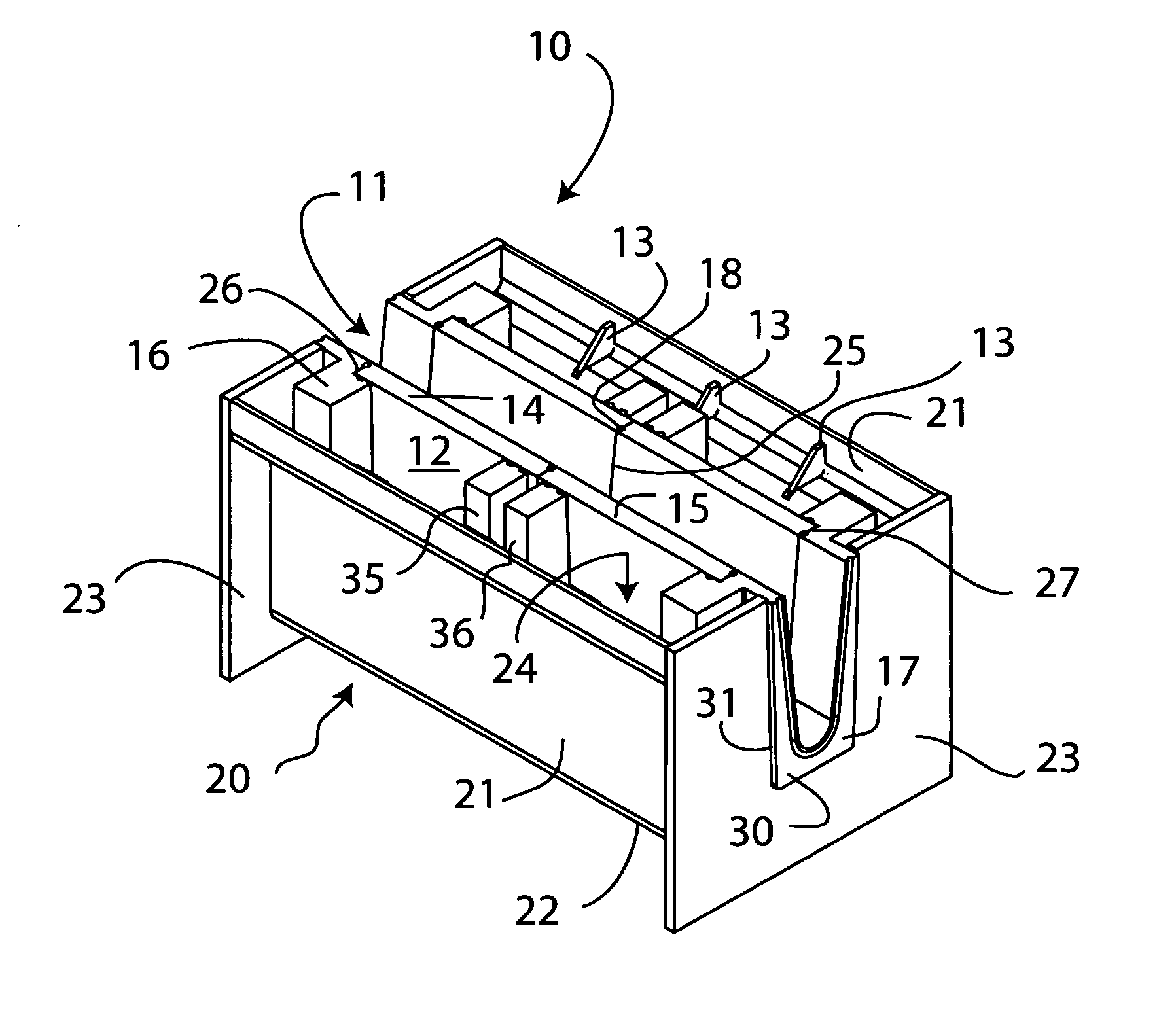Molten metal leakege confinement and thernal optimization in vessels used for containing molten metal
a technology of leakage confinement and thermal optimization, which is applied in the field of vessel used for containing and/or conveying molten metals, can solve the problems of difficult installation in such a way, high cost of solving the problem of metal leakage, and damage to the heating elemen
- Summary
- Abstract
- Description
- Claims
- Application Information
AI Technical Summary
Benefits of technology
Problems solved by technology
Method used
Image
Examples
Embodiment Construction
A first exemplary embodiment of the invention, illustrating a metal containment vessel in the form of a trough section of a kind used for conveying molten metal from one location to another, is shown in FIGS. 1 to 3. The trough section 10 may be used alone for spanning short distances, or it may be joined with one or more similar or identical trough sections to form a longer modular metal-conveying trough. It should be noted that the trough section shown in these drawings is normally provided with two horizontal longitudinal metal top plates, one running along each side of metal-conveying channel 11, forming a top part of an external housing 20, but such top plates have been omitted from the drawing to reveal interior elements. Heat insulation, e.g. in the form of refractory insulating boards or fibrous batts, normally provided within the housing, has also been omitted for clarity. Reinforcing elements 13 (provided to strengthen the housing 20) are also shown in FIG. 1 on one side o...
PUM
| Property | Measurement | Unit |
|---|---|---|
| distance | aaaaa | aaaaa |
| distance | aaaaa | aaaaa |
| length | aaaaa | aaaaa |
Abstract
Description
Claims
Application Information
 Login to View More
Login to View More - R&D
- Intellectual Property
- Life Sciences
- Materials
- Tech Scout
- Unparalleled Data Quality
- Higher Quality Content
- 60% Fewer Hallucinations
Browse by: Latest US Patents, China's latest patents, Technical Efficacy Thesaurus, Application Domain, Technology Topic, Popular Technical Reports.
© 2025 PatSnap. All rights reserved.Legal|Privacy policy|Modern Slavery Act Transparency Statement|Sitemap|About US| Contact US: help@patsnap.com



